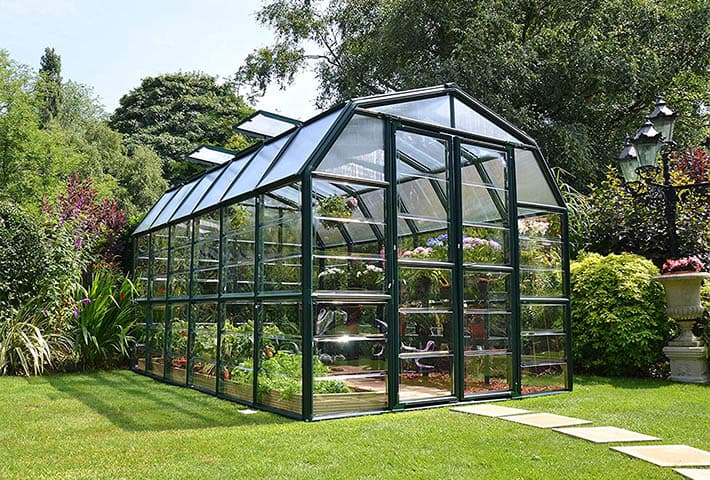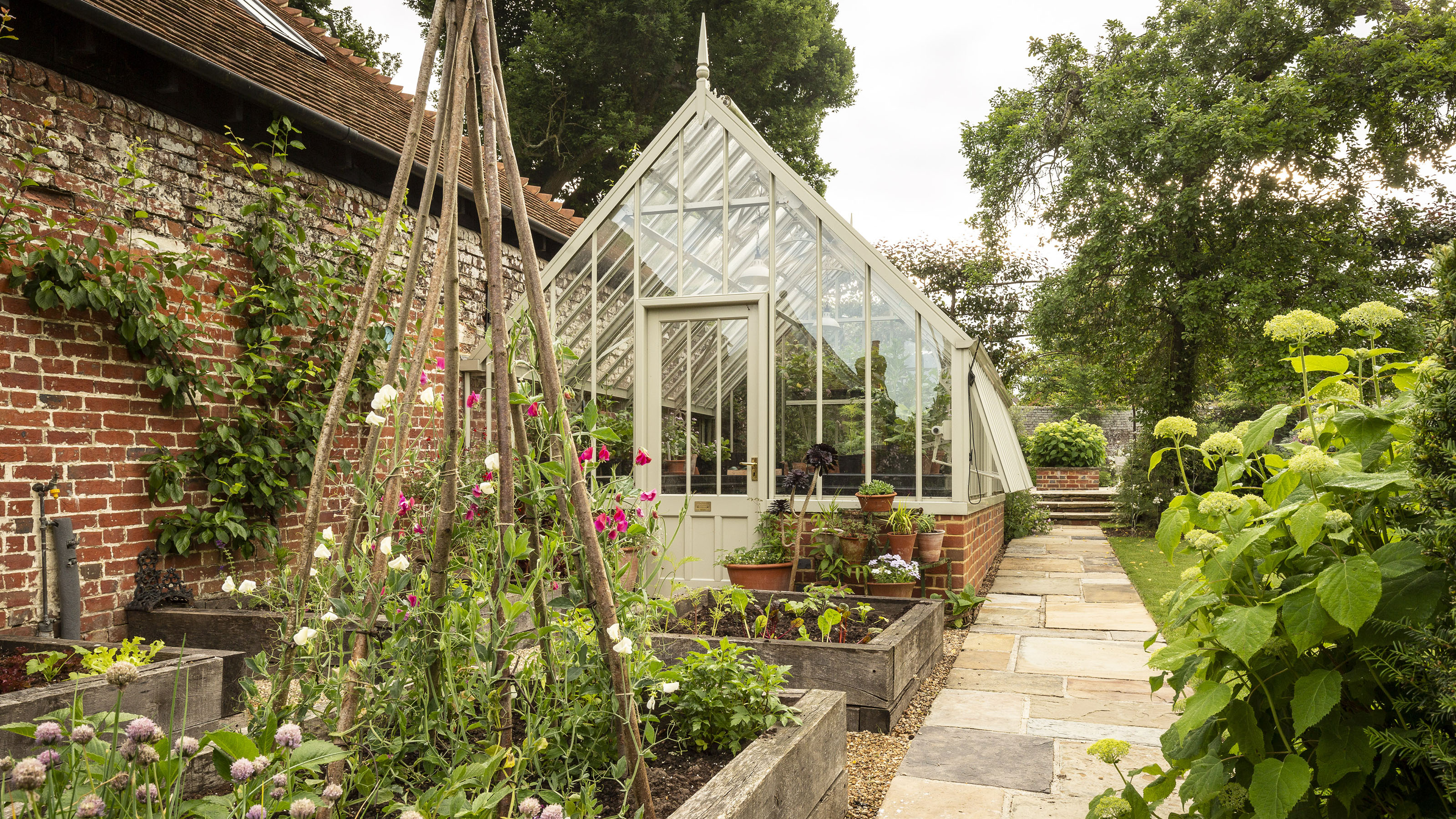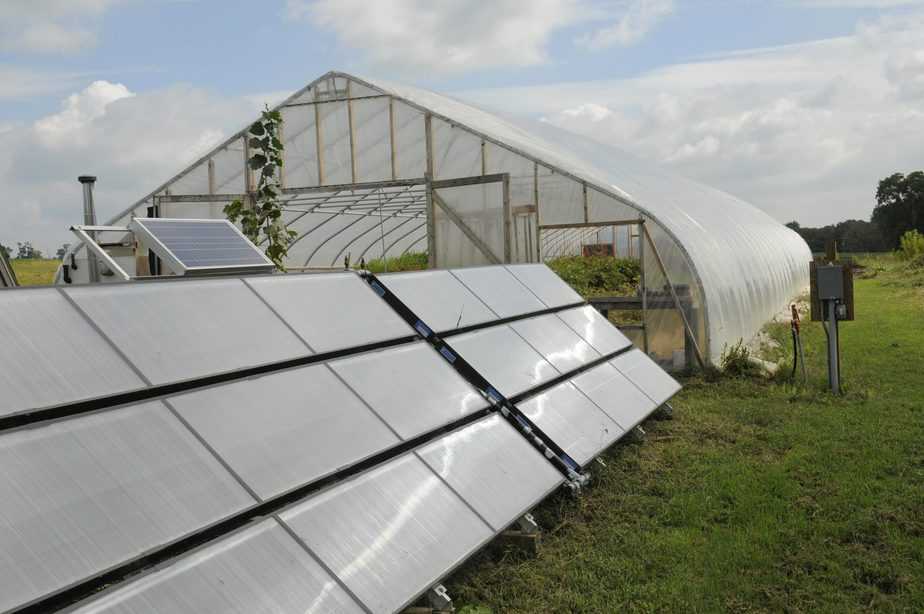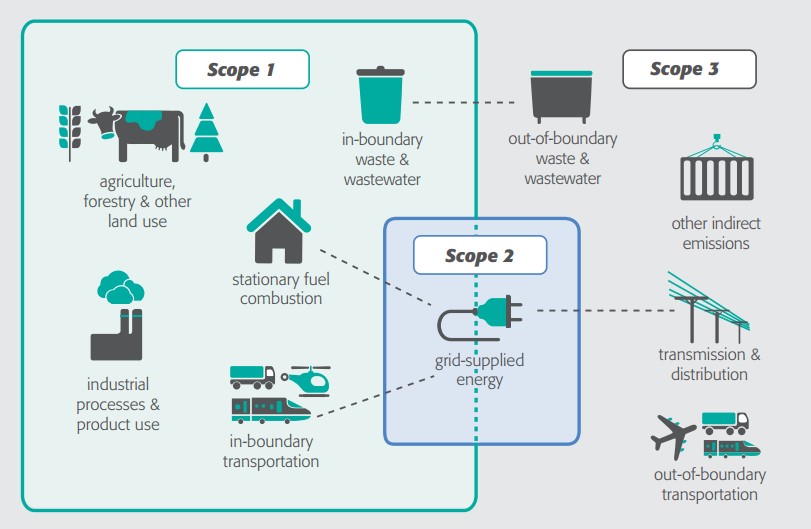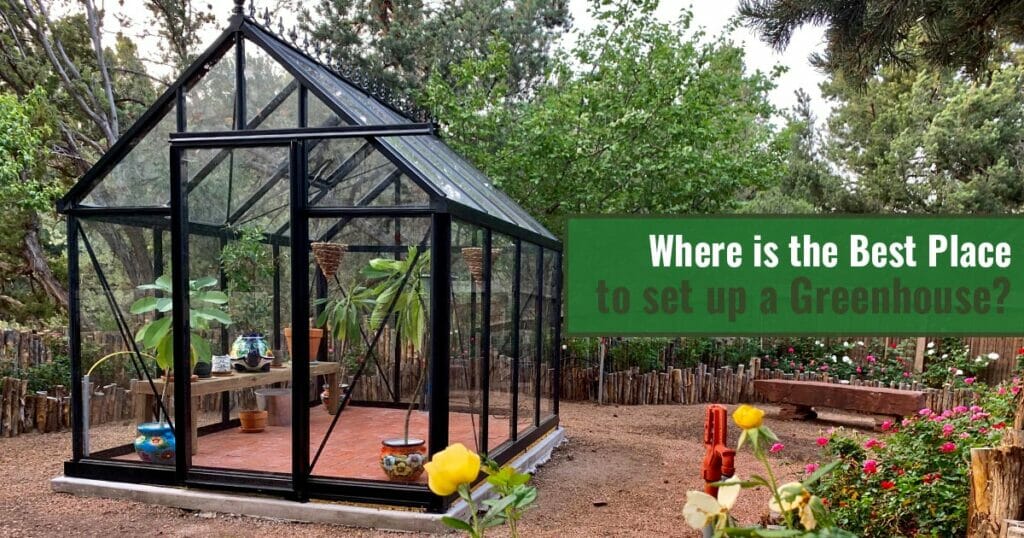Understanding the Importance of Greenhouse Location
When it comes to building a greenhouse, one of the most critical decisions you’ll make is where to place it. The location of your greenhouse can significantly impact its performance, affecting everything from plant growth and energy efficiency to maintenance and overall cost. A well-placed greenhouse can lead to better yields, reduced energy consumption, and lower maintenance costs, making it an essential consideration for any gardener or farmer.
The ideal location for a greenhouse will depend on several factors, including the climate, topography, and surrounding environment. In general, a greenhouse should be placed in an area that receives plenty of sunlight, has good air circulation, and is protected from harsh winds and extreme temperatures. By carefully selecting the location of your greenhouse, you can create an optimal growing environment that promotes healthy plant growth and maximizes your returns.
One of the primary benefits of a well-placed greenhouse is improved plant growth. By locating your greenhouse in an area that receives plenty of sunlight, you can provide your plants with the light they need to thrive. Additionally, a greenhouse located in a spot with good air circulation can help to prevent disease and pests, reducing the need for pesticides and other chemicals.
Another advantage of a strategically located greenhouse is energy efficiency. By placing your greenhouse in a spot that receives plenty of natural light, you can reduce your reliance on artificial lighting, which can be a significant energy drain. Additionally, a greenhouse located in a spot with good insulation can help to retain heat, reducing the need for heating and cooling.
Finally, a well-placed greenhouse can also reduce maintenance costs. By locating your greenhouse in an area that is protected from harsh winds and extreme temperatures, you can reduce the risk of damage and extend the lifespan of your greenhouse. Additionally, a greenhouse located in a spot with easy access to water and other resources can make maintenance and upkeep easier and more efficient.
In conclusion, the location of your greenhouse is a critical factor in its performance and success. By carefully selecting the location of your greenhouse, you can create an optimal growing environment that promotes healthy plant growth, reduces energy consumption, and minimizes maintenance costs. Whether you’re a seasoned gardener or just starting out, understanding the importance of greenhouse location is essential for getting the most out of your greenhouse.
Assessing Your Yard’s Microclimate: A Key to Successful Greenhouse Placement
When it comes to determining the best location for your greenhouse, understanding your yard’s microclimate is crucial. A microclimate refers to the unique combination of environmental conditions that exist in a specific area, including sunlight, wind, soil quality, and temperature. By assessing your yard’s microclimate, you can identify the ideal location for your greenhouse and ensure optimal growing conditions for your plants.
To assess your yard’s microclimate, start by observing the sunlight patterns in your yard. Note the areas that receive full sun, partial shade, and full shade, as well as the time of day when these conditions occur. This information will help you determine the best location for your greenhouse, taking into account the specific sunlight requirements of your plants.
Next, evaluate the wind patterns in your yard. Wind can have a significant impact on greenhouse placement, as it can affect temperature, humidity, and air circulation. Identify areas that are protected from harsh winds and those that are more exposed. This information will help you determine the best location for your greenhouse, taking into account the need for wind protection.
Soil quality is another important factor to consider when assessing your yard’s microclimate. Different plants have different soil requirements, and understanding the soil conditions in your yard will help you determine the best location for your greenhouse. Test your soil to determine its pH level, nutrient content, and drainage, and use this information to select the ideal location for your greenhouse.
Finally, consider the temperature and humidity patterns in your yard. Temperature and humidity can have a significant impact on plant growth, and understanding these patterns will help you determine the best location for your greenhouse. Identify areas that are cooler or warmer than others, and those that are more humid or dry.
By assessing your yard’s microclimate, you can gain a deeper understanding of the environmental conditions that exist in your yard and make informed decisions about greenhouse placement. This information will help you identify the ideal location for your greenhouse, taking into account the specific needs of your plants and the unique conditions of your yard.
When deciding where to place a greenhouse, it’s essential to consider the microclimate of your yard. By doing so, you can create an optimal growing environment that promotes healthy plant growth and maximizes your returns. Whether you’re a seasoned gardener or just starting out, understanding your yard’s microclimate is key to successful greenhouse placement.
How to Choose the Perfect Spot for Your Greenhouse
Choosing the right location for your greenhouse is crucial for optimal performance and plant growth. When deciding where to place a greenhouse, there are several factors to consider, including accessibility, drainage, and proximity to water sources. By carefully evaluating these factors, you can select the perfect spot for your greenhouse and ensure a successful growing experience.
Accessibility is a critical consideration when choosing a location for your greenhouse. Ideally, the greenhouse should be located near a path or walkway, making it easy to access and maintain. Consider the distance from your home or other buildings, as well as the terrain and any obstacles that may affect accessibility.
Drainage is another essential factor to consider when selecting a location for your greenhouse. The area should be well-drained, with a slight slope to prevent water from accumulating around the greenhouse. Avoid low-lying areas or those with poor drainage, as this can lead to waterlogged soil and root rot.
Proximity to water sources is also an important consideration when choosing a location for your greenhouse. Ideally, the greenhouse should be located near a water source, such as a hose or irrigation system, to make watering and maintenance easier. Consider the distance from the water source and the availability of water during times of drought or water restrictions.
In addition to these factors, consider the orientation of the greenhouse in relation to the sun and wind. A south-facing orientation can provide optimal sunlight, while a north-facing orientation can provide shade and protection from harsh winds. Consider the prevailing wind direction and the potential for wind damage when selecting a location for your greenhouse.
Finally, consider the aesthetics of the location and how the greenhouse will fit into the surrounding landscape. Choose a location that is visually appealing and complements the existing architecture and landscape design.
By carefully evaluating these factors, you can choose the perfect spot for your greenhouse and ensure a successful growing experience. Remember to consider accessibility, drainage, proximity to water sources, orientation, and aesthetics when deciding where to place a greenhouse.
When it comes to greenhouse placement, there is no one-size-fits-all solution. The key is to carefully evaluate the specific conditions of your yard and choose a location that meets the unique needs of your plants and greenhouse. By doing so, you can create an optimal growing environment that promotes healthy plant growth and maximizes your returns.
Considering the Role of Sunlight in Greenhouse Placement
Sunlight is one of the most critical factors to consider when deciding where to place a greenhouse. The amount and quality of sunlight that your greenhouse receives can have a significant impact on plant growth, temperature, and overall performance. Different types of plants require varying amounts of sunlight, so it’s essential to choose a location that meets the specific needs of your plants.
When assessing your yard’s sunlight patterns, consider the time of day and the season. Observe the areas that receive direct sunlight, partial shade, and full shade, and note the duration of each. This information will help you determine the best location for your greenhouse, taking into account the specific sunlight requirements of your plants.
South-facing locations typically receive the most sunlight, making them ideal for greenhouses. However, this can also lead to overheating during the summer months. Consider using shading materials or adjusting the orientation of your greenhouse to optimize sunlight reception.
East- and west-facing locations receive gentler sunlight, making them suitable for plants that require partial shade. North-facing locations receive the least amount of sunlight, making them ideal for plants that require full shade.
When choosing a location for your greenhouse, also consider the surrounding environment. Trees, buildings, and other structures can affect sunlight patterns, so it’s essential to assess the area carefully. Consider using a sunlight map or consulting with a gardening expert to determine the best location for your greenhouse.
By carefully evaluating the sunlight patterns in your yard, you can choose a location that meets the specific needs of your plants and optimizes their growth. Remember to consider the time of day, season, and surrounding environment when deciding where to place a greenhouse.
Strategic greenhouse placement can make a significant difference in the health and productivity of your plants. By taking the time to assess your yard’s sunlight patterns and choose a location that meets the specific needs of your plants, you can create an optimal growing environment that promotes healthy plant growth and maximizes your returns.
Wind Protection and Greenhouse Placement: A Crucial Consideration
Wind can have a significant impact on greenhouses, causing damage to the structure, disrupting plant growth, and increasing energy costs. When deciding where to place a greenhouse, it’s essential to consider the wind patterns in your area and choose a location that provides adequate wind protection.
Wind can cause a range of problems for greenhouses, including:
- Structural damage: Strong winds can cause the greenhouse frame to flex or even collapse, leading to costly repairs.
- Plant damage: Wind can disrupt plant growth, causing leaves to become scorched or torn, and reducing yields.
- Energy losses: Wind can increase heat loss in the winter and heat gain in the summer, leading to higher energy costs.
To minimize the impact of wind on your greenhouse, consider the following strategies:
- Choose a location that is sheltered from prevailing winds, such as a spot behind a building or a row of trees.
- Use windbreaks, such as snow fencing or burlap, to reduce wind speed and protect the greenhouse.
- Install a wind-resistant greenhouse frame, such as one made from durable materials like aluminum or steel.
- Use wind-reducing glazing materials, such as double-glazed glass or polycarbonate, to minimize heat loss and gain.
By taking wind protection into account when deciding where to place a greenhouse, you can create a more stable and productive growing environment. Remember to assess the wind patterns in your area and choose a location that provides adequate wind protection to ensure the success of your greenhouse.
Strategic greenhouse placement can make a significant difference in the health and productivity of your plants. By considering factors like wind protection, sunlight, and accessibility, you can create an optimal growing environment that promotes healthy plant growth and maximizes your returns.
Greenhouse Placement and Energy Efficiency: Tips and Strategies
When deciding where to place a greenhouse, energy efficiency is a crucial consideration. A well-placed greenhouse can optimize energy efficiency, reducing energy costs and minimizing environmental impact. In this section, we’ll explore the relationship between greenhouse placement and energy efficiency, and provide tips on how to optimize your greenhouse’s energy efficiency through strategic placement.
Passive solar heating and cooling techniques are essential for energy-efficient greenhouse placement. By orienting your greenhouse to face south, you can maximize solar gain during the winter months, reducing the need for artificial heating. In the summer, a well-placed greenhouse can take advantage of natural ventilation, reducing the need for cooling.
When choosing a location for your greenhouse, consider the following energy-efficient strategies:
- Orient your greenhouse to face south, with a slight angle to maximize solar gain.
- Use thermal mass materials, such as concrete or brick, to absorb and release heat.
- Incorporate insulation and weatherstripping to minimize heat loss and gain.
- Install shading materials, such as louvers or overhangs, to reduce summer heat gain.
- Use natural ventilation techniques, such as vents and windows, to reduce cooling costs.
By incorporating these energy-efficient strategies into your greenhouse placement, you can reduce energy costs, minimize environmental impact, and create a more sustainable growing environment.
Strategic greenhouse placement is essential for optimizing energy efficiency. By considering factors like orientation, insulation, and natural ventilation, you can create a greenhouse that is both energy-efficient and productive.
When deciding where to place a greenhouse, remember to prioritize energy efficiency. By doing so, you can create a sustainable growing environment that promotes healthy plant growth and minimizes environmental impact.
Common Mistakes to Avoid When Placing Your Greenhouse
When deciding where to place a greenhouse, it’s essential to avoid common mistakes that can impact the performance and longevity of your greenhouse. In this section, we’ll identify common mistakes to avoid and provide advice on how to ensure a successful greenhouse placement.
Poor drainage is a common mistake to avoid when placing a greenhouse. If the area is prone to waterlogging or flooding, it can lead to root rot, reduced plant growth, and increased maintenance costs. To avoid this mistake, choose a location with good drainage, and consider installing a drainage system or French drain to ensure excess water is removed.
Inadequate sunlight is another common mistake to avoid. If the greenhouse is placed in a shaded area or receives insufficient sunlight, it can impact plant growth and productivity. To avoid this mistake, choose a location that receives sufficient sunlight, and consider using shading materials or adjusting the orientation of the greenhouse to optimize sunlight reception.
Insufficient wind protection is also a common mistake to avoid. If the greenhouse is exposed to strong winds, it can cause damage to the structure, disrupt plant growth, and increase energy costs. To avoid this mistake, choose a location that provides adequate wind protection, and consider using windbreaks or other techniques to reduce wind damage.
Other common mistakes to avoid include:
- Placing the greenhouse in an area with poor soil quality or inadequate soil depth.
- Ignoring the importance of accessibility and proximity to water sources.
- Failing to consider the impact of surrounding buildings or structures on the greenhouse’s performance.
By avoiding these common mistakes, you can ensure a successful greenhouse placement and optimize the performance of your greenhouse. Remember to carefully evaluate the location and consider factors such as drainage, sunlight, wind protection, and accessibility to ensure a successful greenhouse placement.
When deciding where to place a greenhouse, it’s essential to take a careful and considered approach. By avoiding common mistakes and considering the unique needs of your greenhouse, you can create a productive and efficient growing environment that promotes healthy plant growth and minimizes maintenance costs.
Maximizing Your Greenhouse’s Potential with Strategic Placement
Strategic greenhouse placement is crucial for maximizing your greenhouse’s potential and achieving optimal performance. By carefully selecting the right location for your greenhouse, you can create a productive and efficient growing environment that promotes healthy plant growth and minimizes maintenance costs.
In this article, we’ve discussed the importance of considering factors such as sunlight, wind, soil quality, and accessibility when deciding where to place a greenhouse. We’ve also provided tips and strategies for optimizing your greenhouse’s energy efficiency, avoiding common mistakes, and maximizing its potential through careful location selection.
By following these guidelines and considering the unique needs of your greenhouse, you can create a thriving growing environment that produces high-quality crops and minimizes environmental impact. Remember to take a careful and considered approach when deciding where to place a greenhouse, and don’t hesitate to seek professional advice if needed.
With strategic greenhouse placement, you can unlock the full potential of your greenhouse and achieve optimal performance. By carefully selecting the right location and considering the unique needs of your greenhouse, you can create a productive and efficient growing environment that promotes healthy plant growth and minimizes maintenance costs.
When deciding where to place a greenhouse, remember to prioritize factors such as sunlight, wind, soil quality, and accessibility. By doing so, you can create a thriving growing environment that produces high-quality crops and minimizes environmental impact.
By maximizing your greenhouse’s potential with strategic placement, you can achieve optimal performance and create a productive and efficient growing environment. Remember to take a careful and considered approach when deciding where to place a greenhouse, and don’t hesitate to seek professional advice if needed.


